Bonjour,
je propose un sujet de stage sur l’analyse de la variabilité de développement de l’embryon d’ascidie via des observations par microscopie.
Bien cordialement
G. Malandain
————————————————————————-
An image-based analysis of animal embryonic variability within and between species
The goal of this project is to develop computational methods and concepts to study and quantify the structure of the morphological variability during animal embryogenesis.
Despite its reproducibility, animal embryogenesis shows variations between individuals of a given species, and between related species. This variation is important for the evolution of species and can be under selective pressure. Interspecific embryonic variability has been proposed to follow a “developmental hourglass” pattern: it peaks at the beginning and end of embryogenesis and is more limited during the central period [Kalinka and Tomancak, 2012]. How universal this pattern is remains unknown.
Ascidians are marine invertebrate animals that develop without growth or cell death and with invariant cell lineages, such that a one-to-one correspondence can be generally made between the individual cells of different early embryos [Lemaire, 2011]. The host teams for this project have developed a pipeline to segment, track and analyse each cell of individual embryos of the ascidian Phallusia mammillata with high temporal resolution [Guignard, 2020], opening the era of quantitative cellular-scale description of embryogenesis. The teams have generated a collection of more than 20 segmented live embryos in wild-type or experimentally perturbed conditions. Each acquisition is made of one to two hundred 3D images and covers a large part of embryonic development.
This study revealed an overall cellular reproducibility up to the neurula stages, with some variability.
The goal of this intership is to develop novel computational methods, which will be used to investigate the structure of this variability.
The intership will be located in Sophia-Antipolis (Morpheme team, I3S/INRIA, Sophia-Antipolis) and will be in collaboration with P. Lemaire’s lab (CRBM, Montpellier). The ideal candidate will either have a master’s degree in computer science, mathematics or physics, with an interest in developmental biology, or a master’s degree in biology with strong knowledge in computer science and/or mathematics. S/he should have skills in Image Processing and Analysis. S/he should be proficient in programming in Python language.
Application
Applicants should send a letter of motivation and a CV to:
Dr. Grégoire Malandain, gregoire.malandain@inria.fr, +33 (0)4 89 15 43 21
Salary: ca. 550 euros net/month.
References:
Guignard, L., Fiuza, U.-M., Leggio, B., Laussu, J., Faure, E, Michelin, G., Biasuz, K. Hufnagel, L., Malandain, G., Godin, C. and Lemaire, P. (2020). Contact area–dependent cell communication and the morphological invariance of ascidian embryogenesis. Science, 369(6500), eaar5663
Kalinka, AT and Tomancak, P. (2012) The evolution of early animal embryos: conservation or divergence? Trends in Ecology and Evolution 27, 385-393
Lemaire, P. (2011). Evolutionary crossroads in developmental biology: the tunicates. Development 138, 2143–2152.
To apply for this job email your details to gregoire.malandain@inria.fr
